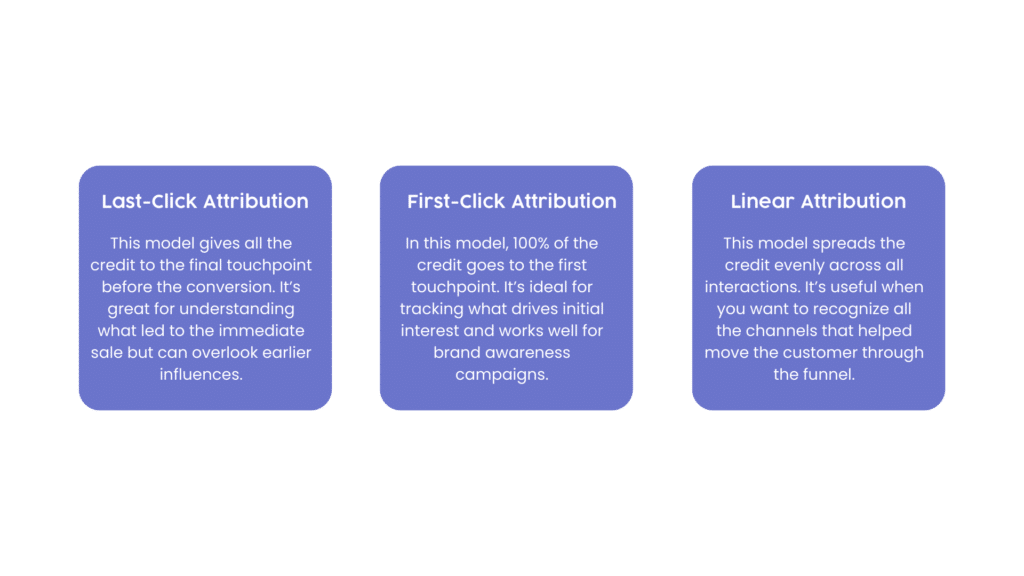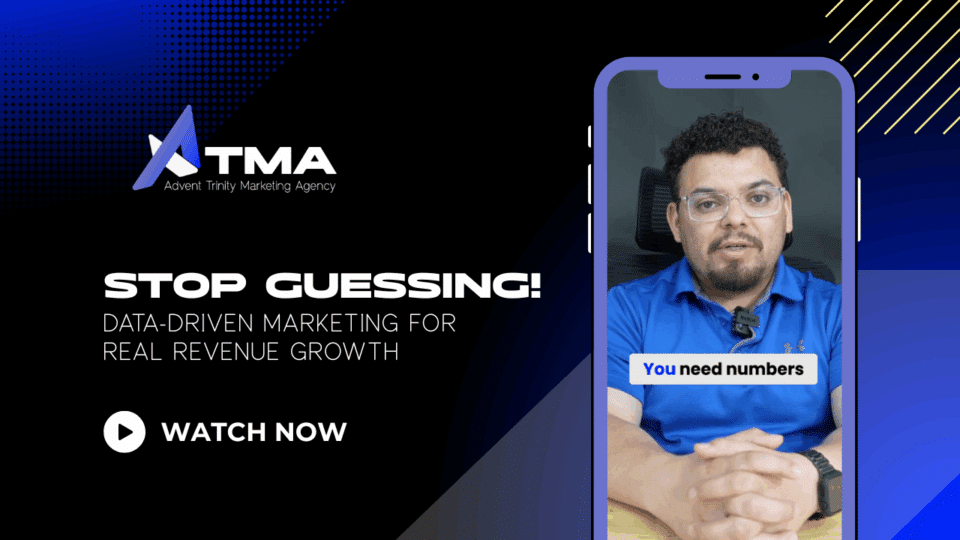
Strategic Growth: Use KPIs to Guide Your Next Move
November 4, 2024
From Numbers to Strategy: Unlock Predictive Insights
November 18, 2024Ever wonder which marketing touchpoint impacted your sales—a social media post, an email, or maybe a Google ad? That’s where marketing attribution models come in! They help you pinpoint which parts of your strategy drive the most value, allowing you to optimize your efforts and improve your marketing ROI.
What is Marketing Attribution?
Attribution models in marketing are frameworks that help you determine which marketing channels and touchpoints contributed to a desired action, like a purchase or lead generation. Understanding attribution can answer questions like, “Was it the Facebook ad or the email newsletter that ultimately led to this sale?” Knowing this can help you focus on the best strategies and allocate your budget more effectively.
Common Types of Attribution Models
Choosing the right model depends on your marketing goals and the customer journey tracking needs of your business. Here are the most common digital marketing attribution models:

Multi-Touch Attribution Models
For more complex buying journeys, multi-touch attribution models are key. They consider all interactions, providing a comprehensive view of how different channels and campaigns work together to influence conversions. While more detailed, these models require robust data and analytics tools to implement correctly.
How to Choose the Right Attribution Model
The right model for your business will depend on what you’re trying to measure:
- Brand Awareness
If your focus is on understanding what drives initial engagement, use first-click attribution. This helps you see what content or campaigns spark interest in your brand. - Lead Generation
To understand which interactions drive leads, consider using linear attribution. This approach ensures that all touchpoints in the customer journey get equal credit. - Sales Conversions
If your goal is to see what closes deals, go for last-click attribution. It gives you insights into which final actions push customers over the line. - Customer Journey Mapping
For a holistic view, position-based or time-decay attribution models will give you a clearer picture of how different interactions contribute over time.

Using Attribution Data to Optimize Your Campaigns
Once you choose an attribution model, use the data to optimize your campaigns:
- Identify High-Performing Channels
Determine which channels—social media, emails, or paid ads—are bringing in the most value. - Allocate Budget Effectively
Focus your budget on the channels and touchpoints that yield the highest returns. - Refine the Customer Journey
Use the insights from customer journey tracking to create a smoother path from awareness to conversion.

Key Takeaways
- Define Your Goals First: Choose an attribution model that aligns with your marketing objectives, whether it’s awareness, lead generation, or sales.
- Start Simple: If you’re new to attribution, try first-click or last-click attribution before diving into complex multi-touch models.
- Use Data to Adjust: Regularly review your attribution data to refine your strategy and improve your results.
By understanding and using marketing attribution effectively, you can fine-tune your strategies and make data-driven decisions that drive success!




